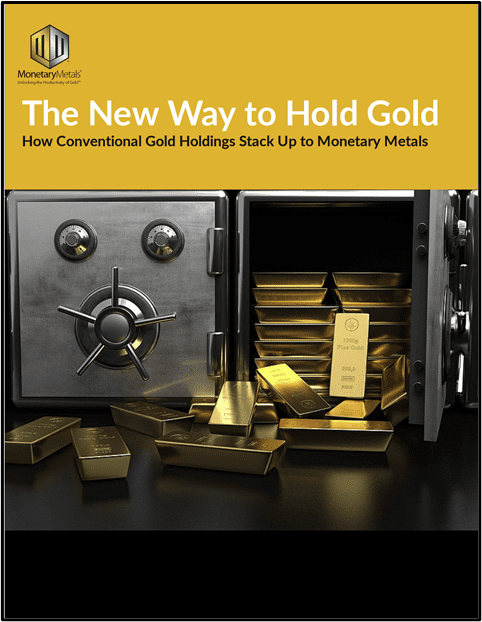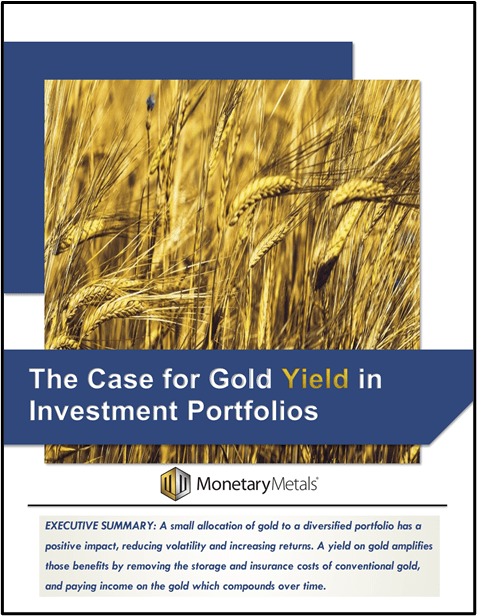The Anti-Concepts of Money The cash-value of promoting each of these anti-concepts is that they lead people to think that the central bank should impose a monetary policy. To make our lives better. Our monetary policy is set by the Federal Reserve, which states that in pursuit of its mandate for price stability, it will engineer chronic 2% annual inflation. If we had nuclear reactor policy like this, power plant engineers would seek a slow, steady increase in core temperature. If we had airplane policy, pilots would want a slow, steady loss of altitude. The purpose of monetary policy is to boost GDP and employment. So long as it does not reduce purchasing power too rapidly, i.e. cause too much inflation, and of course if actually boosts GDP and employment and
Topics:
Keith Weiner considers the following as important: 6a.) Monetary Metals, 6a) Gold & Monetary Metals, blog, Featured, Hyperinflation, inflation, Money, Money Supply, newsletter, purchasing power, stagflation
This could be interesting, too:
Clemens Schneider writes Café Kyiv
Clemens Schneider writes Germaine de Stael
Clemens Schneider writes Museums-Empfehlung National Portrait Gallery
Clemens Schneider writes Entwicklungszusammenarbeit privatisieren
The Anti-Concepts of Money
The cash-value of promoting each of these anti-concepts is that they lead people to think that the central bank should impose a monetary policy. To make our lives better.
Our monetary policy is set by the Federal Reserve, which states that in pursuit of its mandate for price stability, it will engineer chronic 2% annual inflation. If we had nuclear reactor policy like this, power plant engineers would seek a slow, steady increase in core temperature. If we had airplane policy, pilots would want a slow, steady loss of altitude.
The purpose of monetary policy is to boost GDP and employment. So long as it does not reduce purchasing power too rapidly, i.e. cause too much inflation, and of course if actually boosts GDP and employment and avoids stagflation, then nobody has any reason to complain.
Anti-concepts are pretty sneaky. There is no way that people would accept that the debts of a spender so profligate that it puts drunken sailors to shame, a spender who spends based on the votes of third parties who receive benefits but do not feel the costs, are free of risk. But for one thing.
They admit into their mind anti-concepts that prevent them from grasping the key ideas about money.
The Existential Money Crisis
The world faces an unprecedented crisis. We have twin long-term trends: exponentially rising debt at all levels, and falling interest rates (punctuated with corrections, as now). These trends cause consumption of capital.
The wealth effect enables and encourages people to consume more. They purchase plane tickets and hotel rooms, and don’t forget the booze. And cars. And lots of boats and planes, too.
But they are not spending income, which is a share of production. They are liquidating assets.
The anti-concept GDP prevents us from seeing this process for what it is. We see only the consumption, which we celebrate as growth. The economy is cannibalizing itself, while this pernicious anti-concept blinds us to the destruction and even makes us see it as a good thing.
When speculators bid up asset prices—which they’re forced to do as they are deprived of a return on their capital—people see their value storage containers overflowing with purchasing power. They ask not how it is bestowed upon them.
And most people, including most economists, do not see the picture which I just painted. Handicapped by their acceptance of a heap of anti-concepts, they believe that inflation can only be caused by increasing the money supply, or the closely-related velocity. They also believe that increasing money supply has only one effect: inflation.
That pseudo-equation does not have more variables to express, for example, what happens if regulators force refiners to add ethanol, or environmental agencies block oil and natural gas pipelines.
This allows them to put the cart before the horse, and use consumer prices to measure the value of money itself. And this leads to two lethal conclusions:
- If your assets are going up as fast as consumer prices, then you have a good store of value
- Or, if your assets are going up at a faster rate, then you have more purchasing power
This purchasing power paradigm is a philosophy for a Prodigal Son, or a Prodigal Society. It encourages people to view the seed corn as food to be eaten, to think of the farm as something to liquidate to buy groceries.
A Proper Field of Monetary Science
If there is to be a proper field of monetary science, not to mention a real conversation about our monetary disease, then we must establish some proper concepts and discard the anti-concepts that have taken their place.
If we fail to do so, then we will witness the greatest civilization that ever existed consume itself. With increasing incentives to hollow out the capital on which our society stands, it will eventually collapse. The consequences will be horrific. Food and energy production are capital intensive. Starved for capital in the end, production will collapse. It will dwarf the collapse of Rome.
Make sure to subscribe to our YouTube channel and weekly newsletter to stay up to date on the latest breaking news happening in the markets and how to protect yourself.
Want to talk with us about our Gold Fixed Income products? Schedule a call with a Relationship Manager today!
Additional Resources for Earning Interest on Gold
If you’d like to learn more about how to earn interest on gold with Monetary Metals, check out the following resources:
In this paper we look at how conventional gold holdings stack up to Monetary Metals Investments, which offer a Yield on Gold, Paid in Gold®. We compare retail coins, vault storage, the popular ETF – GLD, and mining stocks against Monetary Metals’ True Gold Leases.
The Case for Gold Yield in Investment Portfolios
Adding gold to a diversified portfolio of assets reduces volatility and increases returns. But how much and what about the ongoing costs? What changes when gold pays a yield? This paper answers those questions using data going back to 1972.
Tags: Blog,Featured,hyperinflation,inflation,money,Money Supply,newsletter,purchasing power,stagflation


